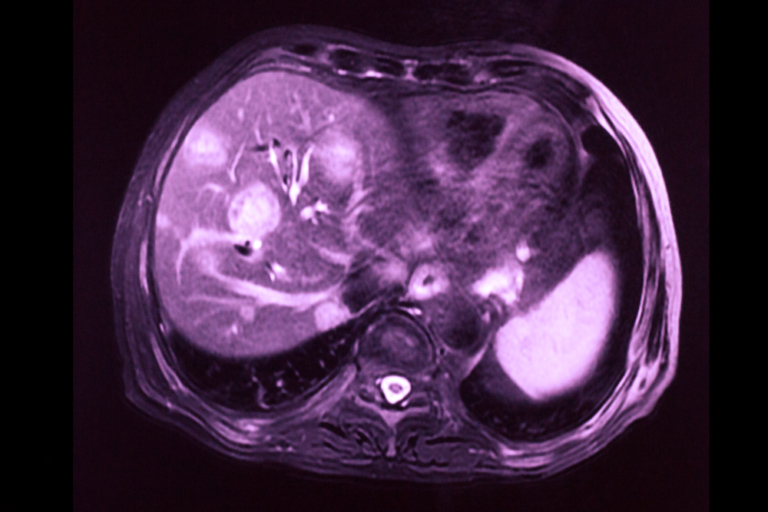What Are Liver Metastases (Hepatic Metastases)
Also called secondary liver cancer, liver metastases develop when cancer from another part of the body spreads to the liver.
How Common Are Liver Metastases (Hepatic Metastases)
In the US and Europe, secondary liver cancer is 18-40 times more common than primary liver cancer hepatoma. Liver metastases may form shortly after the original cancer develops, or months and even years later.
The liver is one of the most common organs cancer spreads. In most patients, liver metastases originate from cancer in the colon, with colorectal carcinoma accounting for about 50%.
Other common types of cancer that spread to the liver are:
- lung
- breast
- pancreatic
- stomach
- thyroid
- melanoma
- neuroendocrine
- renal
Usually, people who develop secondary cancer in the liver are already aware of their primary cancer. In such cases, liver metastases are most often found during routine imaging tests – especially if a patient’s doctor has reason to suspect the cancer may have spread to the liver. However, occasionally, liver metastases are found before the primary cancer is diagnosed.
How Are Liver Metastases Detected
Proper diagnosis of secondary liver cancer relies heavily on a radiologist’s thorough understanding of the various appearances of liver metastases. Benign liver lesions share numerous characteristics with liver metastases. Hemangiomas and focal nodular hyperplasia (FNH) are particularly difficult to differentiate from metastatic tumors and are a serious cause of confusion during image interpretation.
Ultrasound, CT, and MRI are all useful for detection and evaluation of liver metastases. No single study on its own is recommended, but rather a combination. A radiologist’s familiarity with the technique and imaging modality used is essential to avoid a false-positive diagnosis.
With such high prevalence of benign liver lesions, the risk for misinterpretation is high and can dramatically affect a patient’s course of treatment. During the diagnostic stage, it is imperative images are read by a subspecialty radiologist. A second opinion is also highly recommended to confirm diagnosis. For patients undergoing treatment for liver metastases, follow-up imaging plays a crucial role in patient management.
Liver Metastases (Hepatic Metastases) Symptoms
Hepatic metastases themselves are usually asymptomatic. They are typically found during a workup for another malignancy from which the cancer has spread.
If the liver metastases grow large enough, a patient may present symptoms related to liver disease, such as:
- pain and tenderness of the abdomen
- nausea or vomiting
- low grade fever
- loss of appetite
- weight loss
- tiredness (fatigue)
- a swollen tummy
- a yellow tinge to the skin and whites of the eyes (jaundice)
How Are Liver Metastases Treated
Secondary liver cancer is generally treated based on the primary cancer, taking into consideration what care the patient has already received. Cases in which only one or a few areas of cancer are found, surgical removal may be an option. Other treatment methods work toward slowing the growth and managing the problems caused by liver metastases. Chemotherapy is the most common treatment approach. In some cases, it may even shrink the cancer enough to be surgically removed. Other treatment methods include: targeted therapy, ablation therapy, radiation therapy, and hormonal therapy.
Get a Subspecialty Second Opinion Today
The DocPanel platform enables people all over the world to get an expert second opinion in as little as 24 – 72 hours.
An easy 3-step process – instantly upload your scans, select an expert subspecialty radiologist (or have DocPanel assign your case to the appropriate subspecialist), and submit your request. Upon uploading your scans, you’ll also have the opportunity to ask any questions you might have about your case.
Not sure what a subspecialist is? Learn more with our in-depth article on the importance of getting a second opinion from a subspecialty radiologist.
Dr. Richard Semelka, leading expert in abdominal imaging, has been practicing radiology for over 28 years. He’s written over 16 text-books, 370 peer-reviewed papers, and has over 21,000 research citations in Abdominal Imaging.
Get your scans interpreted by Dr. Semelka or explore DocPanel’s complete team of subspecialty radiologists. Request a second opinion today.
